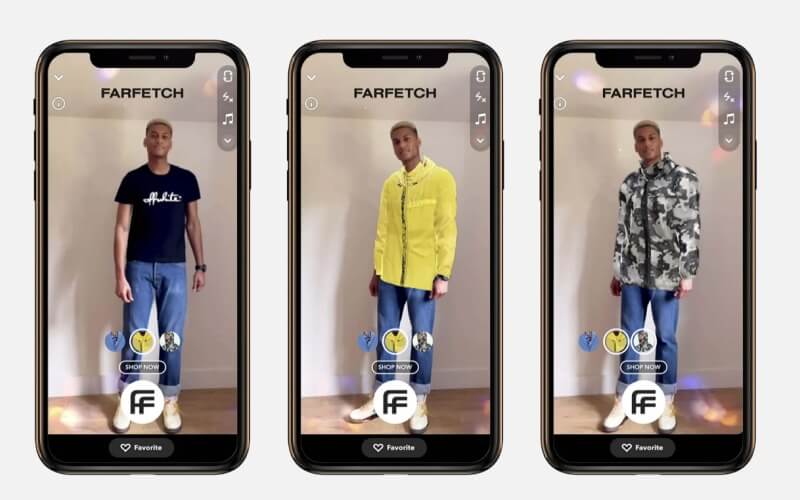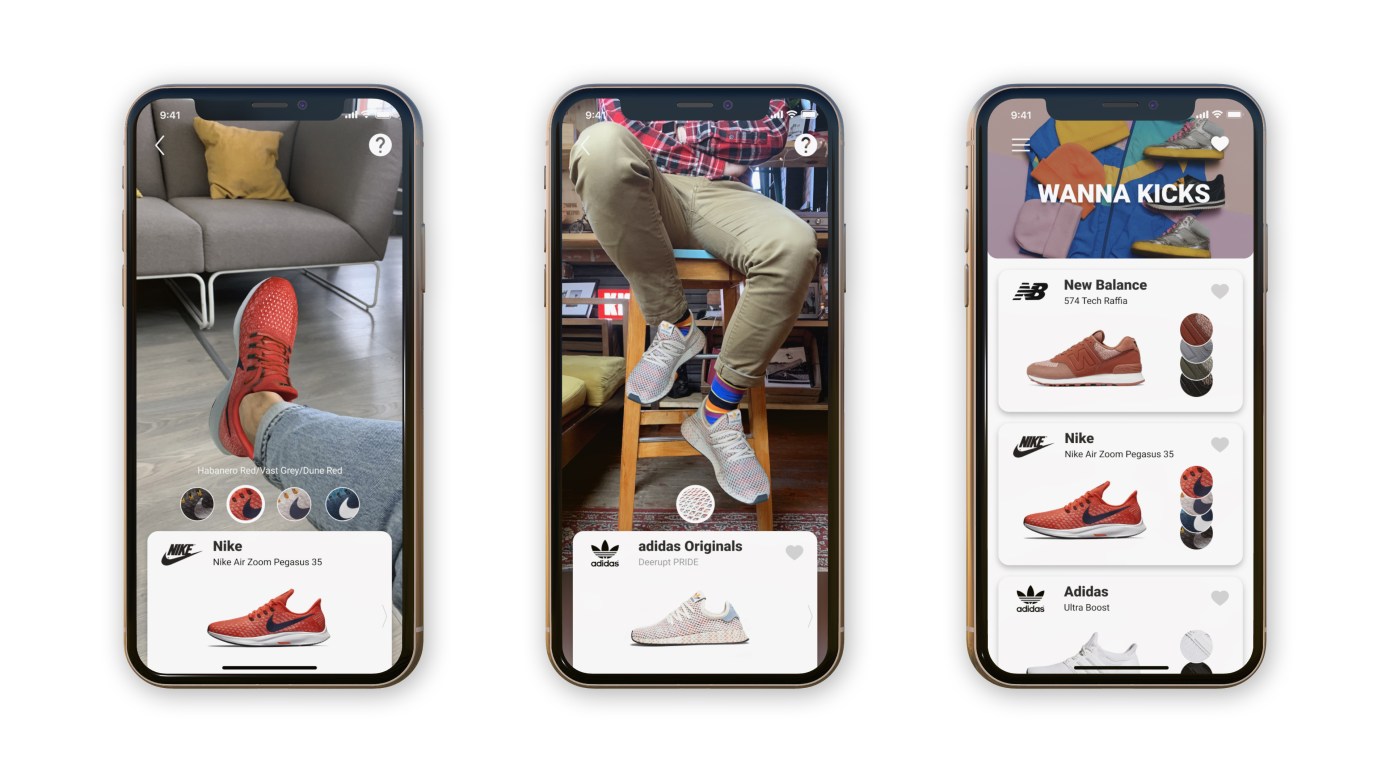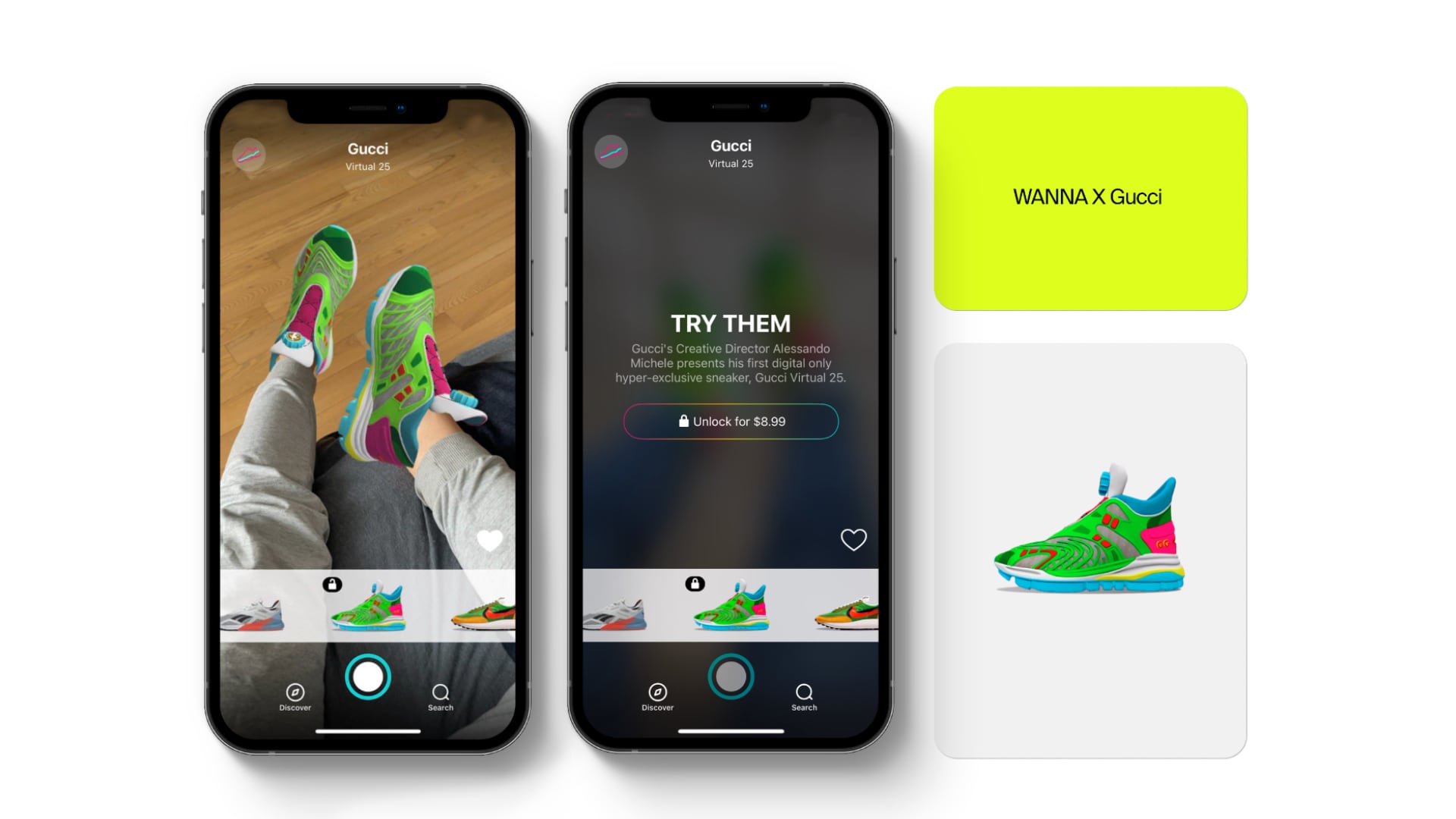
Virtual Try-On Technology for the Luxury Industry: How It Works, Benefits & Challenges
Augmented reality (AR) is the new big thing in luxury fashion retail, providing customers with a true-to-life experience of their shoes, bags, and clothes before even setting eyes on them in person. But how does virtual try-on technology actually work, what advantages are there for both retailers and customers, and what challenges still need to be overcome?

What is virtual try-on?
Virtual try-on is a technology that allows users to visualize how a particular product, such as shoes, bags, clothing, scarves, watches or makeup, would look on them without physically trying it on. It does this by using augmented reality (AR) or computer vision to superimpose the product on the user's image, creating a realistic virtual experience. This groundbreaking technology gives e-commerce shoppers the opportunity to try on the products they want to buy remotely and facilitates informed purchasing decisions. It could not have come at a more apt moment: with the global market for fashion e-commerce expected to reach the value of $821.19 billion and the number of AR device users expected to top 1.4 billion this year alone, the demand for AR virtual try-on technology is greater than ever before.
How does virtual try-on technology work?
Virtual try-on technology uses augmented reality (AR) to create a virtual environment that simulates the experience of trying on a product. AR technology uses the camera on a customer's device to overlay a virtual image of the product on top of the customer's image. This allows the customer to see how the product would look on them in real-time.
The process begins by the customer selecting the product they want to try on. The AR technology then scans the customer's face or body to create a 3D model that represents the customer's unique features. The technology then superimposes the 3D model of the product onto the customer's 3D model, allowing the customer to see how the product would look on them.
What are the benefits of virtual try-on?
The fashion industry has long relied on in-person try-ons to sell products, but in recent years virtual try-on solutions have emerged as powerful tools for luxury fashion retailers. And with AR product experiences proving to be 200% more engaging when compared to their non AR equivalents and 61% of consumers stating they prefer to shop with retailers which provide AR experiences than those which don’t, the benefits to customers of using AR are no longer something retailers can choose to ignore.
Let’s explore some of the advantages of this technology for both retailers and customers.

Increased conversions
Virtual try-on technology–sometimes referred to as 3D virtual technology–has been shown to significantly increase conversion rates for luxury fashion retailers. This is because when customers can see how clothing and accessories would look on them before making a purchase, they are more likely to buy. Some retailers have reported conversion rate increases of up to a staggering 400% after implementing a virtual try-on solution.
Reducing returns
Virtual try-on software can also help reduce returns for luxury fashion retailers. When customers can see how shoes, bags, clothing and accessories would look on them in virtual reality before making a purchase, they are less likely to buy items that don't fit or that don’t look good on them. This can help reduce the number of returns and exchanges, which can be costly for luxury retailers. In fact, this study from 2021 found that fashion and luxury brands that offer a virtual try-on tool average 64% fewer returns when compared to retailers not offering the service.
Improving personalization
Improving personalization is another huge benefit of virtual try-on for fashion retailers. By using customer data and preferences, retailers can offer personalized recommendations and suggestions based on what the customer looks like during a virtual try-on session.
No-contact, safe and efficient fitting
Following the COVID-19 pandemic, customers may be hesitant to visit stores in-person or interact with sales associates. Virtual try-on offers a safe and efficient way to address this valid customer concern. The AI technology eliminates the need for in-person contact, allowing customers to try on clothing and accessories safely and efficiently from the comfort of their own homes.
Building relationships
Finally, virtual try-on can help fashion retailers build closer relationships with their customers. By offering a personalized and engaging experience, retailers can create connections with online shoppers that can lead to increased loyalty and repeat business.
As this technology continues to evolve, we can expect to see even more innovative uses of virtual try-on in the fashion industry.

What are the challenges of virtual try-on?
While virtual try-on technology has many benefits for the fashion industry, it also poses some specific challenges for customers and retailers as the technology continues to evolve and improve. Let’s explore some of them.
Customers can't touch the items
One of the biggest challenges of virtual try-ons in the fashion industry is that customers can't touch the items they are trying on. The omission of this sensory input can make it difficult for customers to fully understand the quality, texture, and feel of the clothing or accessories. In addition, some customers may be hesitant to make a purchase without being able to touch or feel an item first.
Poorly executed experiences
Another challenge of virtual try-on is that poorly executed experiences can actually hurt sales. If the virtual try-on experience is not realistic or does not accurately represent how the clothing or accessories would look on the customer, it can lead to dissatisfaction, damage to a brand’s reputation, and lower sales.
Technical limitations
Virtual try-on technology also has technical limitations. For example, it may not work well on all devices or in all lighting conditions. Technical glitches can also disrupt the virtual try-on experience and lead to frustration for customers.
Limited product availability
While virtual try-on technology is becoming more and more versatile, there may be some limitations on which products it can work with. For example, it may be difficult to create a virtual try-on experience for certain types of clothing or accessories, such as jewelry or hats.


Which luxury retailers are pioneering virtual try-on technology?
Luxury retailers are always at the forefront of technological advancements, and virtual try-on technology is no exception. Virtual try-on technology has indeed become a game-changer for luxury retailers, providing customers with an immersive yet digital shopping experience that increases their confidence in making online purchases. Here’s a rundown of some of the major luxury retailers offering virtual try-on technology to their online customers.
Gucci

As a leading luxury fashion brand, Gucci was also a frontrunner in integrating virtual try-on technology into its shopping experience, first integrating the AR experience into their IOS app back in 2019. The brand offers a virtual try-on feature on its website, allowing customers to try on different shoes virtually in order to provide a realistic representation of how the shoes will look on the individual in real life. The technology allows customers to see items in different colors and materials, as well as from different angles and in different lighting conditions, enabling each user to come to a more informed decision about their potential purchase.
Burberry
Iconic British label, Burberry, is another brand that has embraced virtual try-on technology. Thanks to the AR try-on technology, customers can try on different coats and jackets–in multiple colors and materials–virtually, in order to come to a decision about whether or not they want to buy.
Burberry's virtual try-on technology incorporates a high level of personalization and customization. Customers can adjust the size and position of the product on their face or body, ensuring that they get an accurate and personalized representation of how the product will look on them. This level of customization helps to increase customer satisfaction and can lead to higher sales.
Another special feature of Burberry's virtual try-on technology is that it enables users to share images of themselves wearing the product on social media to generate a buzz around specific products. The company has also AR as a marketing tool. Back in the Spring/Summer of 2021, and inspired by the maritime themes of the season, Burberry used AR to allow customers to design their own 3D Pocket bag sculptures.
Chanel
Chanel’s virtual try-on technology provides its customers with a highly realistic and immersive experience thanks to the level of detail and accuracy it provides. The technology is able to effectively replicate the texture, color, and shape of the product, which significantly boosts customer satisfaction when shopping online with the brand.
Chanel's virtual try-on technology is designed to work seamlessly with the company's website and mobile app. This means that customers can easily access the virtual try-on feature and use it to experiment with a wide range of products, including makeup, sunglasses, and accessories.
Louis Vuitton

Louis Vuitton’s virtual try-on offering is designed to provide customers with a high level of interactivity and engagement. The technology allows customers to try on a huge selection of products, including eyewear, jewelry, and accessories, and provides a high level of customization options, too. Customers can adjust the size, color, and position of the product on their face or body, as well as move their head or body to see how the product looks from different angles. This ensures a highly personalized and accurate representation of how the product will look on them once purchased.
Louis Vuitton’s foray into AR doesn’t end with its products. The company recently collaborated with well-known artist Yayoi Kusama to decorate popular attractions, such as the Eiffel Tower, the Statue of Liberty, with colored dots, in reference to its quintessential collection of leather goods. Imaginative campaigns such as these demonstrate how AR can be harnessed to spark the interest of users and build brand awareness in a break from traditional advertising or marketing methods.
Fendi
Convenience is central to high-end retailer Fendi’s virtual try-on experience. The luxury brand offers the virtual try-on technology through both its website and app, combining a seamless UX with a high level of personalization, realistic representation, and an easy-to-use interface. Customers can select from a variety of products, including sunglasses and other accessories, and can adjust the size, color, and position of the product on their face or body to ensure an accurate and personalized representation of how the product will look on them.
Fendi has also gamified its shopping experience using AR. In September of 2022, the luxury fashion retailer teamed up with Meta for an AR project which gamified one of its most iconic sneaker silhouettes.
Prada

Prada’s virtual try-on offering uses advanced computer vision algorithms to measure the customer's face or body, ensuring that the virtual product is displayed accurately and in the correct position. In addition, the AR uses advanced graphics-rendering technology to accurately replicate the texture, color, and appearance of the product, providing a highly realistic and immersive experience for the customer.
Conclusion
Virtual try-on technology has the potential to revolutionize the luxury industry by providing customers with a virtual try-on experience. By allowing customers to see how a product looks on them before making a purchase, luxury brands can improve the customer experience and ultimately boost sales. However, virtual try-on technology also presents challenges, such as the cost of implementation and the inability to replicate the in-person experience. Despite these challenges, virtual try-on technology is an exciting development for the luxury industry and is likely to become an increasingly important part of the e-commerce landscape.
